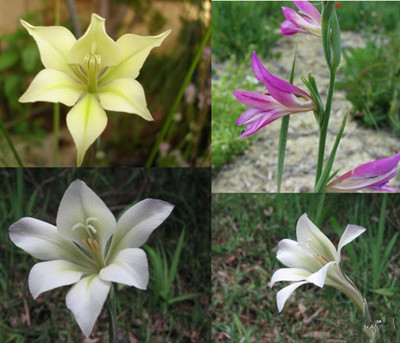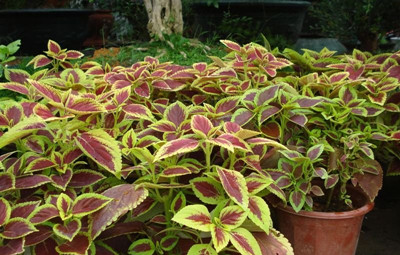The propagation method of dragon spitting pearl
Longtuzhu is commonly used in cutting, ramet, sowing and propagation.
Cutting propagation:
Branch, bud and root cuttings are often used. The branches can be inserted into the top twigs of the strong and disease-free branches, or the lower old branches can be cut into 8-10 cm stem segments as cuttings. Bud grafting is to take the lateral buds on the branches, with-part of the meristem, as cuttings. Root cuttings are root cuttings with immediate score of stolons cut to 8cm in length for cuttings. The cuttings can use substrates such as peat, perlite, rotten leaf soil, river sand and vermiculite. Cutting in spring and autumn is the best. The optimum cutting temperature is 21 degrees Celsius and the bed temperature is 26 degrees Celsius, which is beneficial to rooting + points. It can take root 3 weeks after insertion. If 0.5%-0.8% indolebutyric acid solution is used to treat the base of cuttings for 1-2 seconds, it can take root faster and more.
Ramet propagation: after flowering, the new branches germinated on the underground stolon are dug up, potted directly with roots and maintained in a semi-shady place.
Sowing and reproduction: from March to April. The seeds are larger, sowing in indoor pots, under the condition of 24 degrees Celsius at room temperature, sprouting one after another about 10 days after sowing, and when the seedlings are 10 cm high, they can blossom in small pots.

The culture method of dragon spitting pearl
First, the culture method of dragon spitting beads-- potted plants.
The pot of dragon spitting beads usually needs to be replaced every two years, preferably before spring or after the whole flower has withered. It is best to use tiles at the bottom to sort out a suitable drainage hole and then add bone powder as a basic fertilizer, and then add it into the new culture soil to plant dragon beads. After planting dragon spitting beads, it can be watered and fertilized to help seedlings get nutrients to grow.
Second, the culture method of dragon spitting beads-watering
The more colorful the dragon spits the beads, the more it is inseparable from moisture. Longtuzhu is very sensitive to water content, so it is necessary to strengthen soil wettability in the process of stem and leaf growth, but not too much. If the dragon spits beads too much or too little, it will not blossom, or the leaves will turn yellow.
Third, the culture method of dragon spitting beads-- light.
The plant itself is very sensitive to light, and sufficient light is appropriate even in cold winter. While paying attention to shade in summer, you should take it out to illuminate when the sun is not warm in the afternoon.
The culture method of dragon spitting pearl belongs to the perennial plant of Verbenaceae. Generally, potted plants grow very short due to the restriction of pruning. In fact, it is a semi-vine vine, branches can be more than one Zhang, this kind of flower is thicker and easy to grow, more flowers, fewer diseases and insect pests, the most suitable for home planting. If it is pruned in time after the summer flowers fade, the flowers are expected to bloom twice before the end of the year. Longtuzhu is native to West Africa and is now widely cultivated as a potted climbing flowering plant. Like a warm, semi-overcast and humid environment. The overwintering temperature should be above 15 ℃ and lower than 10 ℃ for a long time, which can cause defoliation to death. By sowing or cutting propagation, the life of the seed is short and it is sown immediately after harvest. Longtuzhu is a flowering plant, the flowering period is very long, it is appropriate to use fertile, well-drained slightly acidic sandy loam, potted dragon spit beads, generally every 1 to 2 years to change the pot, the time to change the pot in early spring or after the flower fade. When changing the basin, first use broken tiles to cover the drainage hole, and then put a small amount of bone powder as base fertilizer, then load new culture soil (4 parts of rotten soil, 4 parts of garden soil, 2 parts of sandy soil), plant good plants, and leave 2-3 cm along the mouth for fertilization and watering. Pour water thoroughly after changing the basin, slow the seedlings in the shade, and then move to the sunny place to maintain the dragon spit beads and fertilize too much. In the flowering season, the mature thin cake fertilizer and water should be applied every 7-10 days, and the fertilizer should be applied for 3-4 times. If yellowing is found in the process of cultivation, it can be combined with topdressing and 0.2% ferrous sulfate can make the leaves change from yellow to green gradually.
- Prev

Culture and Flower cultivation of Gladiolus
Gladiolus, also known as sword orchid, is not an orchid, but belongs to the bulbous plant of the duck tail family. Ecological habits: light-loving long-day plants, winter cultivation cloudy days to increase light, afraid of cold. The suitable growth temperature is 2025 degrees Celsius during the day and 1015 degrees Celsius at night. Through dormant bulbs
- Next

Water insertion Propagation of Colored Leaf Grass
Colourful leaf grass is an herbaceous flower, and its reproductive energy is very strong, especially in the water method, the success rate is even higher. The following is to introduce the steps of water-cutting propagation of colourful leaf grass: 1. Prepare the container: the cuttage container can be a wide □ bottle, or you can cut off the upper part with a beverage bottle and fill the lower part with fresh water. The container must be clean.
Related
- Fuxing push coffee new agricultural production and marketing class: lack of small-scale processing plants
- Jujube rice field leisure farm deep ploughing Yilan for five years to create a space for organic food and play
- Nongyu Farm-A trial of organic papaya for brave women with advanced technology
- Four points for attention in the prevention and control of diseases and insect pests of edible fungi
- How to add nutrient solution to Edible Fungi
- Is there any good way to control edible fungus mites?
- Open Inoculation Technology of Edible Fungi
- Is there any clever way to use fertilizer for edible fungus in winter?
- What agents are used to kill the pathogens of edible fungi in the mushroom shed?
- Rapid drying of Edible Fungi

